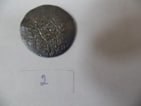The “Language” of diplomacy: secrets from 500 years ago and the “Power of Money” in politics
🔴 The Center of Islamic Civilization unveils the secrets of the past
🔴 Truths about the symbol of state power
Every coin is not just a piece of metal but the “passport” of an entire era. It contains hidden information about the economy, politics, and even the ruler’s strength or justice.
That is why the Center of Islamic Civilization in Uzbekistan has given a special place to numismatics in its exhibition. Here, through coins and seals, history “comes alive”: trade caravans, diplomatic relations, state power, and the life of the people seem to step onto the stage again. Thus, the exhibition is an invaluable resource not only for scholars but also for the wider public.
Coins and seals — symbols of state power
Numismatics and sphragistics, as auxiliary fields of history, play a crucial role in studying past economic relations, political systems, and cultural environments. Coins and seals were not just means of circulation but symbols of state authority and legal recognition. Coins minted in Central Asia from the 15th to the 19th centuries serve as unique sources, shedding light on trade, treasury policies, religion and ideology, as well as the legitimacy of rulers.
The Shaybanids and the “Power of Money”
 At the beginning of the 16th century, Muhammad Shaybani Khan ended the rule of the Timurids and established a new political and economic order in Mawarannahr. One of his main goals was to strengthen the state economically. For this reason, after capturing Herat in 1507, he carried out monetary reform. Under the new system, the weight of the silver coin was increased from 4.8 grams to 5.2 grams. This was not a simple number but an “economic signal” aimed at increasing trust in trade.
At the beginning of the 16th century, Muhammad Shaybani Khan ended the rule of the Timurids and established a new political and economic order in Mawarannahr. One of his main goals was to strengthen the state economically. For this reason, after capturing Herat in 1507, he carried out monetary reform. Under the new system, the weight of the silver coin was increased from 4.8 grams to 5.2 grams. This was not a simple number but an “economic signal” aimed at increasing trust in trade.
The minting of the ruler’s name, title, and religious mottos on the coins served as a legal confirmation of his authority. At the same time, the inscriptions carried cultural and political meaning, reinforcing the ruler’s prestige among the people. In the Shaybanid era, epigraphic texts such as “adl” (just) and “shirmard” (hero) expressed the authenticity of conquest and the legitimacy of power.
The “Language” of diplomacy
During the Shaybanid era, foreign trade expanded, and initial diplomatic ties with Russia were established. In 1558, Anthony Jenkinson, an English merchant and diplomat, visited Bukhara. The monetary system played an important role not only in domestic markets but also in international trade, becoming the “language” of diplomacy. In this process, silver and copper coins served as the main instruments of exchange.
Economic changes under the Ashtarkhanids
When the Ashtarkhanids came to power in 1599, the tradition of coin minting continued. However, economic difficulties in the Bukhara Khanate increased during this period. At the same time, changes in coin design became visible: the ruler’s name was placed inside a frame, while Arabic inscriptions were preserved but became more vernacular, reflecting the cultural environment’s development.
The epigraphy on these coins carried not only economic value but also political and cultural significance. Just as the mention of a ruler’s name in the khutbah was important, so too was its appearance on coins as a legal marker of authority.
Rich historical sources
 Coins from the Shaybanid and Ashtarkhanid periods are rich sources for studying historical processes. They serve as clear indicators of economic stability, state traditions, and the cultural environment. By studying the inscriptions on coins and seals, valuable information can be obtained about the political ideology, religious views, and trade routes of the era. For this reason, numismatics remains an invaluable field for scholarly research. The Center of Islamic Civilization’s exhibition invites visitors to rediscover the past through coins and seals.
Coins from the Shaybanid and Ashtarkhanid periods are rich sources for studying historical processes. They serve as clear indicators of economic stability, state traditions, and the cultural environment. By studying the inscriptions on coins and seals, valuable information can be obtained about the political ideology, religious views, and trade routes of the era. For this reason, numismatics remains an invaluable field for scholarly research. The Center of Islamic Civilization’s exhibition invites visitors to rediscover the past through coins and seals.
Through them, we can learn about:
➖ economic stability of the period,
➖ legitimacy of power,
➖ trade routes and diplomatic relations,
➖ religious and cultural views of the people.
Durdona Rasulova
P/S: This article may be used with reference to the official website of the Center.
Most read

Over 100 experts from more than 20 countries of the world are in Tashkent!

The Center for Islamic Civilization – a global platform leading towards enlightenment

The museum of the Center for Islamic Civilization in Uzbekistan has been further enriched: unique artifacts from different parts of the world have been presented as gifts











